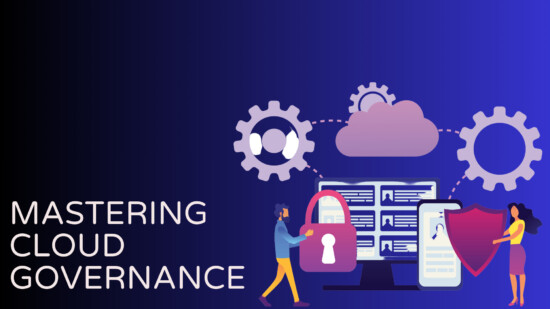As organizations upgrade and expand their IT infrastructure, one key decision they must make is whether to keep their data infrastructure on-premises or move it to the cloud. It’s a decision that can have lasting implications in their ongoing effort to balance operational flexibility and efficiency with the need for greater data control and security.
Determining the right IT approach can be confusing and often involves tradeoffs and balancing competing priorities to deliver the business impact you desire. Whether you choose to move your applications to a cloud environment or decide to keep them on-premises, data protection and security will always be a top priority.
Along with the security component, a number of other critical issues factor into the equation. Some advantages may outweigh the disadvantages. Some shortcomings may be too significant to ignore. The future-readiness of your business and making sure your decisions align with your core business goals are what matter most. With that in mind, here’s a review of some of the pros and cons of on-premises versus cloud solutions.
On-Premises―Key Advantages
• Tighter control. Keeping your servers, software and other dedicated equipment on-site gives you tighter control of your data and how it can be accessed. You also have more flexibility to upgrade or customize infrastructure and applications to meet shifting business needs―without relying on the responsiveness or competence of a third-party provider. With your servers and storage on-site, you know where your data is and can set your maintenance schedules according to workflow demands. With a deep knowledge of your IT environment, your internal team can work closely with users to deliver personalized support and are better equipped to identify and solve issues quickly and efficiently.
• Enhanced security. Unlike cloud storage, access to an on-premises system is restricted to authorized personnel. For businesses that operate in regulated industries, like financial services, it is vital that they stay compliant with regulatory mandates and know who has access to their data and where it is at any given time. Banks, government agencies and other private institutions whose primary concern is data security and consumer privacy often need the enhanced protection and control that an on-premises environment enables.
• Reliable access. One important upside of on-premises infrastructure is its use of an internal network that enables anytime access, which eliminates the need for users to have an internet connection to access data. Internet speed also becomes a non-issue since on-premises systems can operate without it. In a properly configured on-premises environment, access to applications and resources is quick and inherently reliable.
On-Premises―Key Disadvantages
• Cost. Installing on-premises infrastructure requires a substantial capital investment in storage, servers and other hardware to get the operation running. For businesses just starting out, this amount of capital expense can often be a deal-breaker. Along with the upfront costs, you’ll need to ensure the infrastructure is properly installed and maintained. Since you are relying on your internal resources to troubleshoot and solve problems, you may need a larger IT team. This would require hiring additional staff or reallocating existing IT resources to infrastructure maintenance and support. This extra support can increase your long-term costs and reduce overall IT efficiency.
• Potential for data loss. Having your data in one place is convenient, but if disaster strikes, you can lose it―which could be crippling to your business and its reputation. With on-premises infrastructure, a breach or compromise of your system through a malicious attack like ransomware could result in permanent data loss. While backup capabilities are common in cloud-based systems, on-premises environments typically rely on an on-site server to store all data, significantly elevating your level of risk. One way to mitigate this risk is to implement a backup service offsite that reproduces your data to different media or another site.
• Limited scalability. When purchasing storage and server infrastructure, you get exactly what you purchase. If you don’t use all of it, it’s a sunk cost. If your business experiences dramatic shifts in workload demands, it becomes more challenging to quickly scale on-premises infrastructure. Unlike cloud deployments where you can simply opt for a larger capacity plan, on-premises solutions require more hardware and more manpower to install and maintain the new infrastructure. Plus, on-site hardware and equipment consume physical space, so you’ll need to make sure you have sufficient real estate to grow and add more equipment if needed.
Cloud―Key Advantages
• Cost Efficiency. Without the need to purchase, install, and maintain equipment on-site, moving to the cloud can help eliminate capital expenses. This allows you to pay on an as-needed basis, typically on a monthly subscription. Since your cloud storage is hosted by an outside provider, your IT staff is relieved of the routine tasks of installing new software patches and other updates, freeing them to focus on more strategic priorities. The server and storage features can be adjusted to meet your budget demands. You only pay for the resources you use, without the maintenance and upkeep costs.
• Scalability. Cloud-based infrastructure is designed to scale, making it easy to add new server and storage capacity on-demand. Need more processing power or extra storage space? Simply update your plan with the capacity you need. Unlike on-site servers that require the installation of additional hardware, cloud-based servers allow you to scale up your computing power as needed without having to purchase more equipment. This puts you in a better position to accommodate temporary spikes in traffic or build-out capacity for permanent increases in workloads.
• Redundant capabilities. A cloud environment can provide a level of redundancy that would be cost-prohibitive to create with on-premises infrastructure. This redundancy is achieved through additional hardware and data center infrastructure equipped with multiple fail-safe measures. By capitalizing on specialized services and economies of scale, cloud solutions can provide much simpler and cost-efficient backup capabilities than on-premises systems. Redundancy helps ensure you can recover critical information at any given time, regardless of type of event or how the data was lost. This redundancy extends to other cloud components from power to connectivity to hosts and storage.
Cloud―Key Disadvantages
• Control. Cloud operation and management functions are mostly outside your control, which can be a positive if you lack the necessary in-house capabilities. But when issues arise, your only choice is to work with your cloud provider’s support team. In the event of a security breach, the onus is on the service provider to resolve the issue, but the potential impact and consequences rest with you. While you retain control over your applications, data and services, you don’t have the same level of control over the backend infrastructure. The scope of service and the degree of responsiveness you receive from your cloud provider depends on what you agreed to in your SLA. Therefore, make sure you understand the details of your service agreement; particularly concerning the infrastructure and services you’re going to use and how that will impact your business reliability and performance.
• Security. Storing critical business data and files with an external provider always presents certain risks. While cloud providers are expected to implement the best security standards and comply with industry certifications, it’s your responsibility to carefully weigh all the risk scenarios. You’ll want to inquire about security procedures and data encryption practices. While your cloud provider may take extra precautions, you many need additional security measures such as firewalls and access controls, to further protect your data.
• Access. Potential downtime and unreliable access to your data is a major concern when considering a move to the cloud. Since cloud systems are internet-based, a reliable, high-speed internet connection is crucial. If your connection is slow or unreliable, accessing or downloading files can be a frustrating experience. Though internet reliability has improved in recent years, you’ll want to ensure you have complete confidence in your connection before moving files to the cloud. For critical workloads, you might want to consider implementing a redundant internet. Service outages are always a possibility and can occur at any time. If your organization has a low tolerance for downtime, you may want to consider multi-availability zones with your infrastructure, or even multi-region deployments with automated failover to help ensure optimum business continuity.
Align Your Strategy with Your Business Goals
Every cloud deployment has its own unique capabilities and limitations. Although agility and cost savings are vital, moving to the cloud is more about deciding what is best for the organization―not exclusively about reducing costs. Creating a purposed-focused, business-aligned cloud approach should be your top priority.
While the cloud offers a multitude of potential advantages, that doesn’t necessarily mean it’s a good idea to move all your workloads completely to a cloud environment. In fact, one of cloud’s most appealing attributes is that it doesn’t require a complete all-or-nothing decision.
Cloud strategies continue to evolve, and many cloud deployments are already shifting to a hybrid approach. As that proportion continues to shift, organizations must design and build infrastructures that can easily scale and adapt to shifting business needs and application demands.






